Mickey McMickle, Johnny Best, Alec Fila, Billy May (tp); Glenn Miller, Paul Tanner, Jimmy Priddy, Frank D’Annolfo (tb); Hal McIntyre, Wilbur Schwartz, Ernie Caceres, Tex Beneke, Al Klink (reeds); Chummy MacGregor (p); Bobby Hackett (g & cornet); Doc Goldberg (b); Maurice Purtill (d); Ray Eberle, Tex Beneke, Paula Kelly, The Modernaires (vcl); Bill Finegan, Jerry Gray, Billy May (arr).
RCA Victor Studios, New York – August 11, 1941, 1:00 7:00 PM
067625-1 It Happened in Sun Valley (PK, RE, TB, M & Band vcl, BF arr) Bluebird 11263-A
067626-1 I’m Thrilled (RE vcl, BF arr) Bluebird 11287-B
067627-1 The Kiss Polka (PK, EC & M vcl, JG arr) Bluebird 11263-B
067628-1 Delilah (TB & M vcl, BM arr) Bluebird 11274-B
067629-1 From One Love to Another (RE vcl, BF arr) Bluebird 11287-A
067630-1 Elmer’s Tune (RE & M vcl, JG arr) Bluebird 11274-A
Enjoying a hard-earned vacation from live appearances in July and August 1941, the Glenn Miller Band held one session for RCA during their time off. It turned out to be a six-hour marathon that produced six selections, each one special in its own way.
Two novelty songs from Sun Valley Serenade, which was about to open in movie theaters, topped off the playlist.
All the Miller vocalists turn out for IT HAPPENED IN SUN VALLEY, one of only three times that this occurred (the other two were MUTINY IN THE NURSERY and PEOPLE LIKE YOU AND ME). It’s odd to hear Ray Eberle on a rhythm song – he just sings it as if it were one of his usual ballads! Bill Finegan’s arrangement is the same as in the movie, only longer, with the full band joining in to sing. A welcome addition is a romping Al Klink solo, followed by an additional vocal chorus that ropes in Tex Beneke.
THE KISS POLKA is a rollicking treat, especially since the Miller band doesn’t perform it in the film; the Fox studio band plays it. Jerry Gray penned a cheery chart, which Paula and the Mods deliver with relish. For the first time, reedman Ernie Caceres is heard vocally, lending an incongruous touch of Latino spice to the song. With the South American “Good Neighbor Policy” all the rage in 1941, adding Ernie’s Spanish vocals was a clever way for Glenn to ingratiate his troupe with Latin American fans.
I’M THRILLED is a typical Eberle ballad, an early effort by young BMI-ers Sid Lippman and Sylvia Dee, who later hit big with Nat King Cole’s UNFORGETTABLE. Once again Bill Finegan took a so-so song and dressed it up with gorgeous colors, especially in the introduction and first instrumental chorus. Ray is in good form on this session.
Jimmy Shirl, who would have a hand in Johnny Ray’s 1953 hit, I BELIEVE, co-wrote DELILAH with Henry Manners. Another young BMI songwriting team, they had other snappy successes in 1941 with BRAGGIN’ (for Harry James) and GOOD EVENIN’, GOOD LOOKIN’ (for Benny Goodman). Glenn had also performed their KEEP AN EYE ON YOUR HEART on radio earlier in the year. The powerful sound of the full band is evident from the first note and the microphone setup actually allows us to hear the guitar in the rhythm section, a rare occurrence. Billy May’s laid-back arrangement fits the song like a glove, with Tex and the Modernaires smoothly delivering the catchy lyrics.
The song was a bit of a hit for Glenn and also Horace Heidt on Columbia. In 1948, Glenn’s record was reissued by RCA (with ADIOS on the flip side) in the “Re-Issued by Request” series. The sheet music was reprinted, with a new cover featuring Tex, who by now was leading the postwar Miller band.
We next welcome a stellar addition to the band, cornetist Bobby Hackett. Hackett had been in the public eye for several years by 1941, hailed by critics as the “new Bix Beiderbecke.” Hackett had a melodic approach similar to the late Bix, though he wasn’t thrilled about being pigeonholed into such a stylistic straitjacket. Making his first records with members of the Eddie Condon mob, he soon jumped from 52nd Street small groups to leading his own brilliant-sounding big band (including future Miller sideman Ernie Caceres). Poor management by MCA quickly led to the band’s demise in the summer of 1939.
Now deep in debt to MCA, Hackett accepted a surprising offer to join Horace Heidt’s sweet band, where he stayed for nearly two years, enlivening a number of their discs with his lyrical solos. He also had dental problems during this period, which is very bad news for a horn man!
Glenn was a big Hackett fan; aware of his problems, Miller offered the musician a job as guitarist (Hackett’s other favored instrument), replacing Jack Lathrop and Bill Conway (who had been sitting in the guitar chair for several months). When he felt he was ready, Glenn assured Bobby that he would move him to the trumpet section. Not really a strong section player, Hackett understood that the leader wanted him around mostly as a soloist.
Having joined the band on July 10th, Bobby apparently felt ready to take on trumpet duties by the August 11th record date. He makes his debut soaring over the reeds with a delightful opening break and 16-bar solo on FROM ONE LOVE TO ANOTHER. This was another Ernesto Lecuona composition; previously Glenn had waxed his SAY SI-SI and THE ANGELS CAME THRU.
Originally titled DANZA LUCUMI, Artie Shaw had recorded the number in rumba tempo the preceding year, as a hoped-for follow-up to his massive success with FRENESI. English lyricist Albert Gamse (of AMAPOLA fame) smoothed the tune out into a standard fox-trot. Though it wasn’t a hit for Glenn, FROM ONE LOVE TO ANOTHER is a forgotten gem in the discography.
If it was hits Glenn wanted, he couldn’t have been happier with ELMER’S TUNE, a thoroughly unlikely smash success. The TUNE originated with the semi-sweet Dick Jurgens band. Elmer Albrecht, a mortician’s assistant (!), liked to noodle at the piano on his lunch hour. Working next door to Chicago’s Aragon Ballroom, Albrecht had gotten permission to fool around on their keyboard. Jurgens, whose band was playing there at the time, heard one of Elmer’s tunes and offered to help him polish it into a finished form. They then recorded it as a bouncy instrumental in April and the 78 became something of a hit. Bob Crosby then cut it, again instrumentally, in June and that rendition went nowhere.
Sensing the melody had greater potential, Robbins Music took it and assigned lyricist Sammy Gallop to come up with some words. So how do you lyricize something with the title of ELMER’S TUNE? Simply by verbally describing how catchy ELMER’S TUNE is. Not much of a lyric, but it did the trick. Glenn and Benny Goodman (with Peggy Lee making her recording debut) waxed the fleshed-out number in August and wham! Another Number One hit for Glenn, which the fans happily sang along with whenever it was played. And Glenn played it incessantly on the air and in live performance.
With this session, we said hello to Bobby Hackett and Alec Fila (replacing young Ray Anthony on trumpet) and now goodbye to Paula Kelly. Miss Kelly was not leaving due to any dissatisfaction with her work (and she wouldn’t be going far, married as she was to Modernaire Hal Dickinson). She was leaving to make way for the return of a Miller favorite, who we’ll welcome back next time!


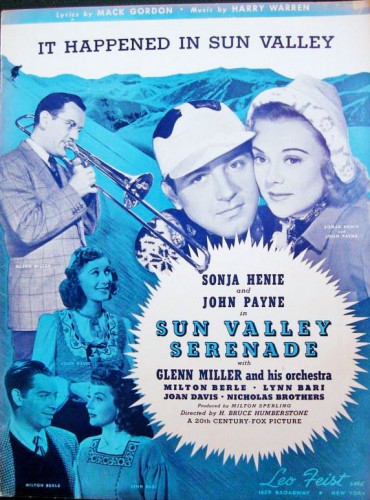




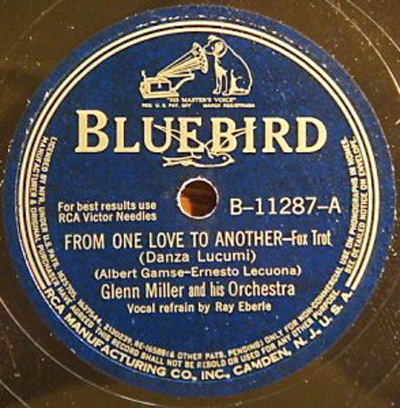


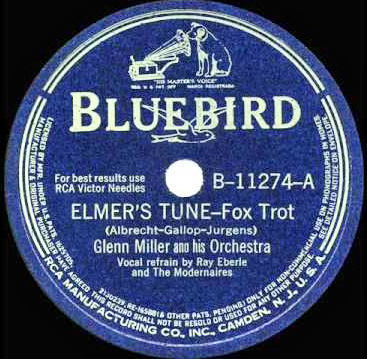















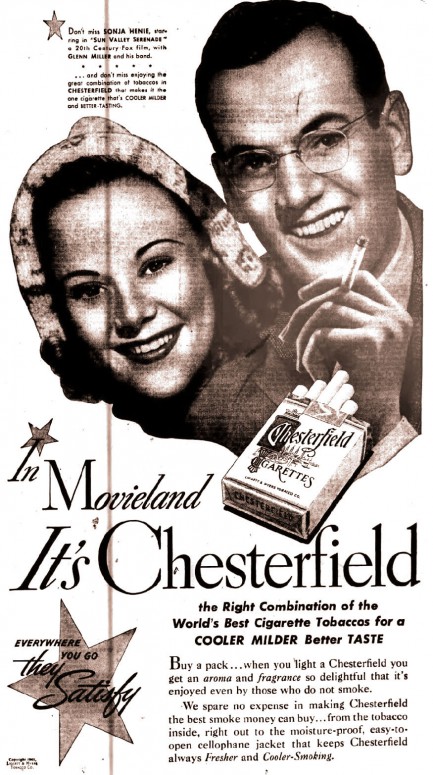













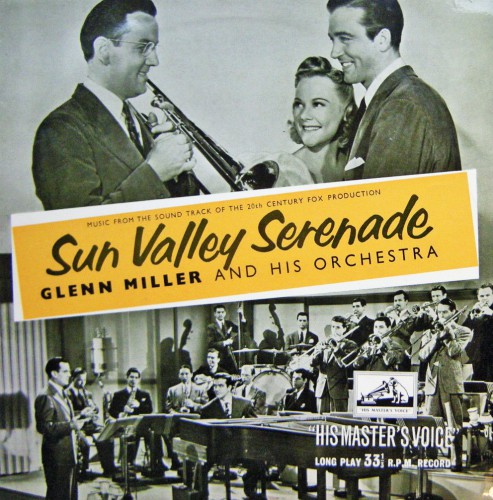











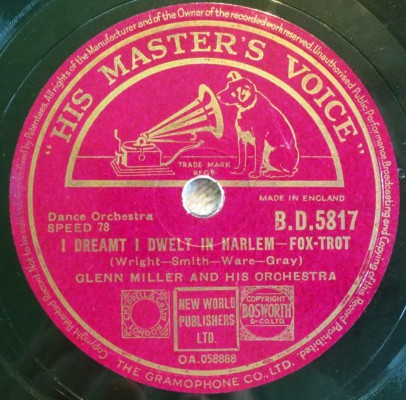

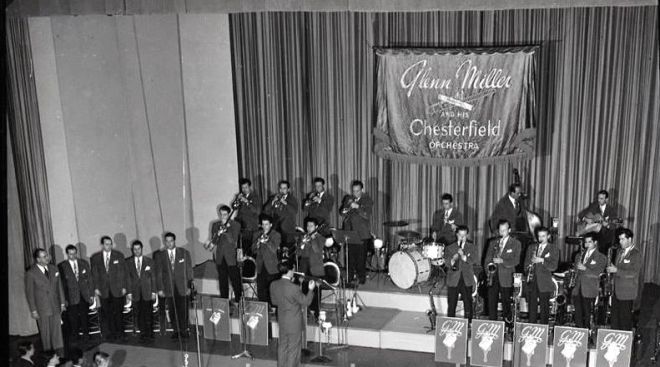



































 Eberle takes a nicely relaxed vocal on SAY IT, the film’s lovely ballad. It’s a song that should have become a standard. Ray is even more hushed and effective on a broadcast version of the song a few weeks later, part of a Something Old/New/Borrowed/Blue medley.
Eberle takes a nicely relaxed vocal on SAY IT, the film’s lovely ballad. It’s a song that should have become a standard. Ray is even more hushed and effective on a broadcast version of the song a few weeks later, part of a Something Old/New/Borrowed/Blue medley.








